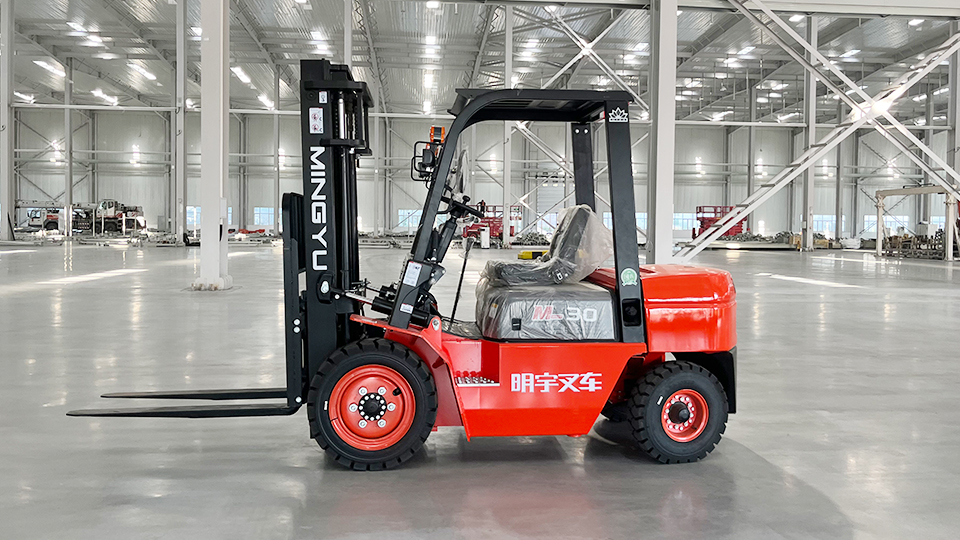
Understanding Forklift Certification Requirements
Before diving into where to get certified, it's crucial to understand what certification actually means. In the United States, the Occupational Safety and Health Administration (OSHA) mandates that all powered industrial truck operators, including forklift drivers, must be trained and certified. However, OSHA does not issue the certifications themselves. Instead, they set the standards that employers must follow to train their operators.
This means that a forklift certification is site-specific. The training you receive must cover the specific type of forklift you'll be operating and the particular hazards of the workplace where you'll be working. For this reason, the most direct and common path to certification is through your employer.
The Three-Step Certification Process
The OSHA standard (29 CFR 1910.178) outlines a three-step process for a successful certification:

1. Formal Instruction
This is the classroom or theoretical part of the training. It can be delivered through a variety of methods, including:
Lectures and discussions
Videos and written materials
Interactive computer-based learning
The formal instruction covers a wide range of topics, including:
The general principles of safe forklift operation.
The types of vehicles you'll be using, including their operating instructions, warnings, and limitations.
The hazards present in your specific workplace, such as narrow aisles, pedestrian traffic, and surface conditions.
Vehicle capacity, stability, and load handling.
Pre-shift inspection and basic maintenance.
2. Practical Training
This is the hands-on portion of the certification. It involves a qualified trainer demonstrating how to operate the forklift and then supervising you as you perform practical exercises. This is where you learn to apply the theoretical knowledge to a real-world setting. You'll practice:
Steering and maneuvering the vehicle.
Lifting, traveling with, and placing a load.
Navigating different surfaces, ramps, and grades.
Parking and safely shutting down the forklift.
3. Performance Evaluation
The final step is for a qualified trainer to formally evaluate your ability to safely and effectively operate the forklift in the workplace. This evaluation confirms that you've mastered the necessary skills and knowledge to operate the machinery without endangering yourself or others. Upon successful completion of this evaluation, your employer issues a certification that includes your name, the date of training and evaluation, and the name of the person who conducted the training.
Where to Get Forklift Certified
Since employers are ultimately responsible for certifying their operators, they are your primary resource. However, there are different scenarios depending on your employment status.
If You Are Already Employed
This is the most straightforward path. Your employer is required by law to provide and pay for your training. They will either:
Have a qualified trainer on staff who will conduct the formal and practical training in-house.

Hire a third-party training company to come to the job site and train their employees.
Send you to an off-site training facility to complete the course.
If You Are Seeking a Job
If you are currently unemployed and want to get certified to make yourself a more attractive candidate, you have a few options to complete the formal instruction part of the training.
Online Courses
Many companies offer OSHA-compliant online forklift certification courses. These courses are a convenient and affordable way to complete the classroom portion from home.
Pros: Flexible, self-paced, and often more affordable than in-person training.
Cons: An online course alone is not a complete certification. It does not include the practical, hands-on training or the final performance evaluation. You must still complete these steps with your future employer.
Vocational Schools and Community Colleges
Many community colleges and vocational schools offer hands-on forklift training programs. These programs are often a more comprehensive option, as they may include both classroom instruction and practical training on a variety of forklift types.
Pros: Provides hands-on experience and can make you a more competitive job applicant.
Cons: Can be more expensive and may require a time commitment.
The Importance of Forklift Classification
It's important to remember that a forklift certification is often specific to the type of forklift you're trained on. OSHA classifies powered industrial trucks into seven categories, and an operator may need training on more than one type.
Class 1: Electric motor rider trucks. These are battery-powered, sit-down forklifts used in indoor settings like warehouses and factories. They are quiet and produce no emissions.
Class 2: Electric motor narrow aisle trucks. These include reach trucks and order pickers, designed to operate in tight spaces and high-density storage environments.
Class 3: Electric motor hand trucks or hand/rider trucks. These are primarily pallet jacks and stackers used for low-level movement of materials.
Class 4: Internal combustion engine trucks with solid/cushion tires. These are typically used indoors on smooth surfaces and are powered by gasoline, LPG, or diesel.
Class 5: Internal combustion engine trucks with pneumatic tires. These are similar to Class 4 but are built for outdoor use on rough, uneven terrain like lumberyards or construction sites.
Class 6: Electric and internal combustion engine tractors. These are used to tow trailers or other non-lifting loads.
Class 7: Rough terrain forklift trucks. These are typically used on construction sites, with large tires and a rugged build to handle challenging outdoor environments.
Your training must cover the specific class of forklift you'll be using. If you switch jobs or are required to operate a different class of forklift, you must receive additional training and a new evaluation.
Certification Renewal and Refresher Training
A forklift certification is not permanent. According to OSHA, operators must be re-evaluated at least once every three years.
Refresher training is also required if:
The operator is involved in a near-miss or accident.
The operator has been observed operating the forklift in an unsafe manner.
The type of equipment or working conditions change significantly.
This ensures that operators maintain their skills and stay up-to-date on all safety protocols.
Name: selena
Mobile:+86-13176910558
Tel:+86-0535-2090977
Whatsapp:8613181602336
Email:vip@mingyuforklift.com
Add:Xiaqiu Town, Laizhou, Yantai City, Shandong Province, China